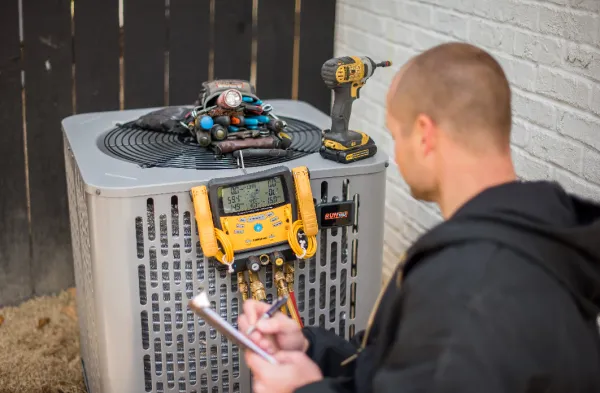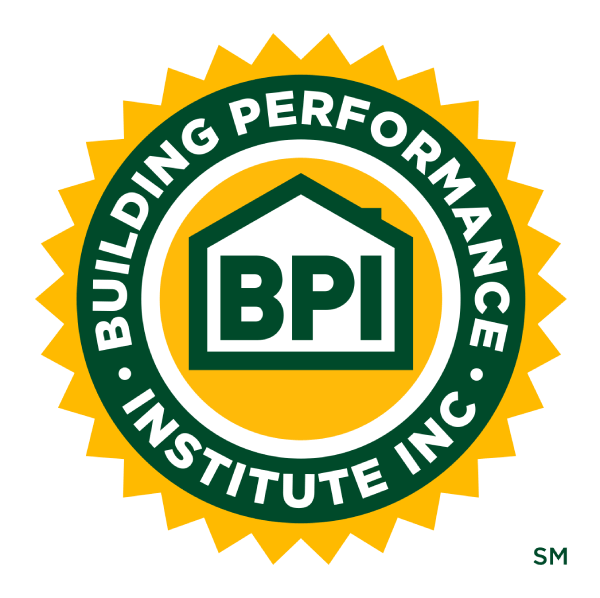You know that feeling when you walk into a room, and even though the air conditioner is humming away, the air still feels thick and muggy—almost like it’s pressing against you? It’s not your imagination. That “heavy air” feeling is one of the most common complaints cooling contractors hear, especially during long stretches of hot, humid weather.
The AC might be running just fine, but the comfort isn’t. The reason? Hidden sources of indoor heat and humidity are working quietly behind the scenes, undoing all the effort your cooling system is putting in.
For the experts who work in homes every day, the secret to solving that heaviness isn’t always found in the thermostat—it’s in understanding where that trapped warmth is really coming from.
What Causes Indoor Air to Feel Heavy Even When The AC is Running?
If you’ve ever described your home’s air as “stuffy” or “thick,” you’re already noticing the signs of an imbalance. Air can feel heavy for several reasons, and they’re not all related to temperature.
Cooling contractors will tell you: just because the thermostat reads 72°F doesn’t mean your home feels like it.
Here are some of the most common culprits:
1. Humidity That’s Sneaking In Unnoticed
Even with the air conditioner on, high humidity can make the air feel sticky and oppressive. Your AC does help remove some moisture, but when the air is overloaded with humidity—whether from showers, cooking, or just humid outdoor air—your system can’t keep up.
When relative humidity stays above 60%, the air feels warmer and denser. That’s because moisture prevents your body from cooling off naturally. You end up sweating more but feeling less relief.
2. Poor Air Circulation
Sometimes it’s not about temperature or moisture—it’s about movement. When cool air isn’t circulating properly, it creates warm pockets or stagnant zones that feel “heavier.” Dirty filters, blocked vents, or poorly balanced ductwork can all stop airflow in its tracks.
3. Leaky Ducts or Poor Insulation
If your ducts have leaks, hot attic air can mix with conditioned air before it reaches your rooms. The result? Your AC works overtime while you still feel warm. Likewise, poor insulation in walls or ceilings can allow radiant heat to seep in faster than your system can cool it.
4. Hidden Heat Sources
From electronics and lighting to poorly sealed windows, hidden heat sources can slowly build up warmth indoors. Each one adds just a bit of extra load—until your AC’s cool output is fighting an uphill battle.
When contractors hear “the air feels heavy,” their minds immediately start mapping where heat might be hiding.
How Do Cooling Contractors Identify Hidden Sources of Indoor Heat?
A good contractor approaches indoor comfort like a detective story. The thermostat may be the main clue, but the real culprits are often tucked away in corners, crawl spaces, and even appliances.
Here’s how pros uncover what’s really heating up your house:
1. They Use Thermal Imaging
Contractors use infrared cameras to detect hot spots that the naked eye can’t see. These reveal where heat is entering or building up—whether from attic insulation gaps, sun-exposed walls, or air leaks around doors and windows.
2. They Check Airflow and Ductwork
Airflow is everything in cooling. Contractors measure air pressure in different rooms to see if the system is balanced. If one vent is pushing too much cold air while another barely moves any, that uneven distribution could make certain rooms feel warmer and heavier.
3. They Inspect Attics and Crawl Spaces
You’d be surprised how many homes have attic temperatures exceeding 130°F in summer. Without proper insulation or ventilation, that trapped heat seeps downward, turning upper floors into mini saunas. Crawl spaces can also introduce heat and humidity through poorly sealed openings.
4. They Consider Everyday Appliances
Ovens, dryers, and even large TVs give off more heat than most people realize. Contractors often advise simple changes—like cooking earlier in the day or running appliances at night—to lighten the cooling load.
5. They Look Beyond the HVAC System
The best technicians know that a heavy-feeling house isn’t always a broken-AC problem. It’s often a whole-home problem: insulation, ventilation, sunlight, and even the home’s orientation to the sun all play a role.
Contractors don’t just cool air—they balance it. They think in systems, not symptoms.
Why Does Trapped Humidity Make a Home Feel Warmer Than It Is?
Here’s the tricky part: air temperature and perceived comfort aren’t always the same thing. That’s where humidity comes in.
When your home traps moisture, the air feels thicker because it’s literally holding more water vapor. And that water vapor slows down the body’s natural cooling process.
1. How Humidity Tricks the Thermostat
The thermostat might say the temperature is fine, but humidity changes how your body senses heat. When sweat can’t evaporate quickly, your body keeps producing more of it, which makes you feel sticky, sluggish, and uncomfortable—even in air-conditioned spaces.
It’s why 75°F with low humidity can feel cool and pleasant, while 75°F with high humidity feels like a sauna.
2. How Moisture Builds Up Indoors
Some of the biggest humidity sources are right under your nose:
- Long, steamy showers without ventilation
- Boiling pots or drying clothes indoors
- Overwatered houseplants
- Cracks or leaks letting in humid outdoor air
Even small amounts of trapped moisture can raise indoor humidity over time.
3. How Contractors Fix It
Professionals often recommend whole-home dehumidifiers or better ventilation strategies to control moisture levels. They might adjust your system’s fan speed to allow more time for air to pass over cooling coils (which naturally remove humidity).
In some cases, they’ll seal leaky ducts or insulate humid areas like basements and attics to prevent warm air from mixing with cool air.
When the humidity drops, the “heavy air” feeling usually disappears—without even changing the temperature setting.
What Hidden Factors Can Affect Indoor Comfort and Cooling Efficiency?
Even the best air conditioner can’t overcome certain invisible forces working against it. Some are easy to miss because they build up slowly over time.
Here are a few of the sneakiest factors that affect indoor comfort:
1. Sunlight and Window Exposure
South- and west-facing windows can heat up rooms dramatically in the afternoon. Even double-pane glass lets in radiant heat. Without proper shades or UV films, your AC spends all day fighting the sun.
2. Air Leaks Around Doors and Windows
Tiny gaps allow hot, humid air to creep in and conditioned air to escape. Contractors often use blower door tests to find these leaks and recommend weatherstripping or caulking to fix them.
3. Dirty Filters and Coils
A clogged filter or dusty evaporator coil restricts airflow, forcing your system to work harder while cooling less efficiently. That trapped warm air then lingers, contributing to that thick, heavy feeling.
4. Blocked Vents and Furniture Placement
A couch or curtain covering a vent can stop airflow dead in its tracks. Homeowners often don’t realize their furniture is sabotaging their comfort.
5. Overworked Systems
If your system is undersized for your home—or simply aging—it may struggle to maintain comfort in extreme conditions. The air never truly cools or dehumidifies, leaving it feeling stagnant.
Professional maintenance can catch these issues early and keep your system performing at its best.
Comfort Isn’t Just About Cold Air—It’s About Balance
What cooling experts know—and homeowners often discover the hard way—is that comfort isn’t a single number on a thermostat. It’s a balance between temperature, humidity, and airflow.
A home that “feels heavy” isn’t necessarily hot—it’s out of sync. The air might be cool but not dry enough, or evenly cooled but poorly circulated. The secret lies in diagnosing how your environment interacts with your system.
When everything works together—proper sealing, good insulation, balanced airflow, and steady humidity—you get more than just cool air. You get light, breathable, truly comfortable air that feels as good as it reads.
Let Horne Heating and Air Conditioning Inc. Lighten the Air in Your Home
At Horne Heating and Air Conditioning Inc., we know that comfort is more than a thermostat setting—it’s a feeling. Our expert technicians specialize in finding and fixing the hidden causes of indoor heat, humidity, and poor airflow that make homes feel heavy and uncomfortable.
We combine advanced diagnostic tools with real-world experience to make your home feel cooler, drier, and more efficient—without guesswork.
Contact Horne Heating and Air Conditioning Inc. today to schedule a comfort evaluation and discover how small fixes can make a big difference in how your home feels.
















